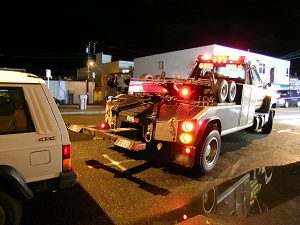Hauling A Sedan Or Four By Four Can Possibly Be Unsafe
If you are towing a trailer for the first time you will wish to have whatever opting for you. Altering from a single automobile to what is basically double that, is not a step to be taken casually. The hitch you use to connect your tow automobile to your trailer is a crucial element in your security and the security of other drivers on the roadway.
A lot hinges on the option of drawback on the planet of towing. There are a number of elements that you need to take into consideration when making the decision. Prior to doing anything else, you will need to consult your vehicle owner's handbook. This extensive source of details will provide you important info concerning the pulling specifications of your lorry.
You will wish to stay well within the criteria described in the handbook, being ever cautious not to place the rig under more pressure than it can safely deal with. Remember that what you can tow under perfect towing conditions and what you can tow under tough conditions are 2 entirely various things.
The tow combination that you create requires to have capability to spare in order to handle these challenges when they emerge. Both the tow vehicle and the hitching system have weight capacities that affect the safety of the entire rig.

Once you have actually figured out the tow lorry's maximum pulling capability you will be able to choose the trailer and drawback that is the best fit. Tow drawbacks can be found in varying classes to match the weight capabilities of the automobile and the gross trailer weight, referred to as the GTW.
Trailer drawbacks specify to each lorry so you require to discover the precise hitch for your car design and year. Many online sites will have you type in these details prior to coming up with the hitch for your lorry.
The most typical drawbacks are receivers. They are the ones that you see on a lot of SUVs, vans, recreational vehicles and trucks. They come in Classes specific to their weight carrying capability. Class I drawbacks have find towing around me a GTW of anything approximately 2,000 pounds. They are the very best alternative for light responsibility tow lorries and commonly allow for the towing of smaller sized loads like bike racks and utility trailers.
Class II drawbacks, with a GTW of 3,500 pounds, are commonly used on guest vans and the less powerful SUVs. Class II drawbacks are capable of pulling smaller sized, lighter travel trailers safely. Some class II drawbacks can have their tow capacities expanded in mix with a good weight distribution system. Details on this option need to be available in your car owner's handbook.
Class III hitches have a more generous tow capacity of approximately 5,000 lbs. They are the most common drawback for the more powerful SUVs and trucks and enable heavier duty towing and a more comprehensive series of weight distribution systems that balance out the trailer load between the wheels of the tow lorry and those of the trailer. The addition of this type of hitch system uses improved security in the type of enhanced steering and brake control.

Once you have selected the correct drawback for your vehicle and trailer and you have had it shipped to your door you will be confronted with a mysterious bundle of chances and ends that bolts onto your lorry frame without welding. Setup times vary from thirty minutes to an hour so do not rush. , if you have doubts about the finished item of your work you may want to invest in a 2nd opinion from an expert before heading out onto the highway.
.